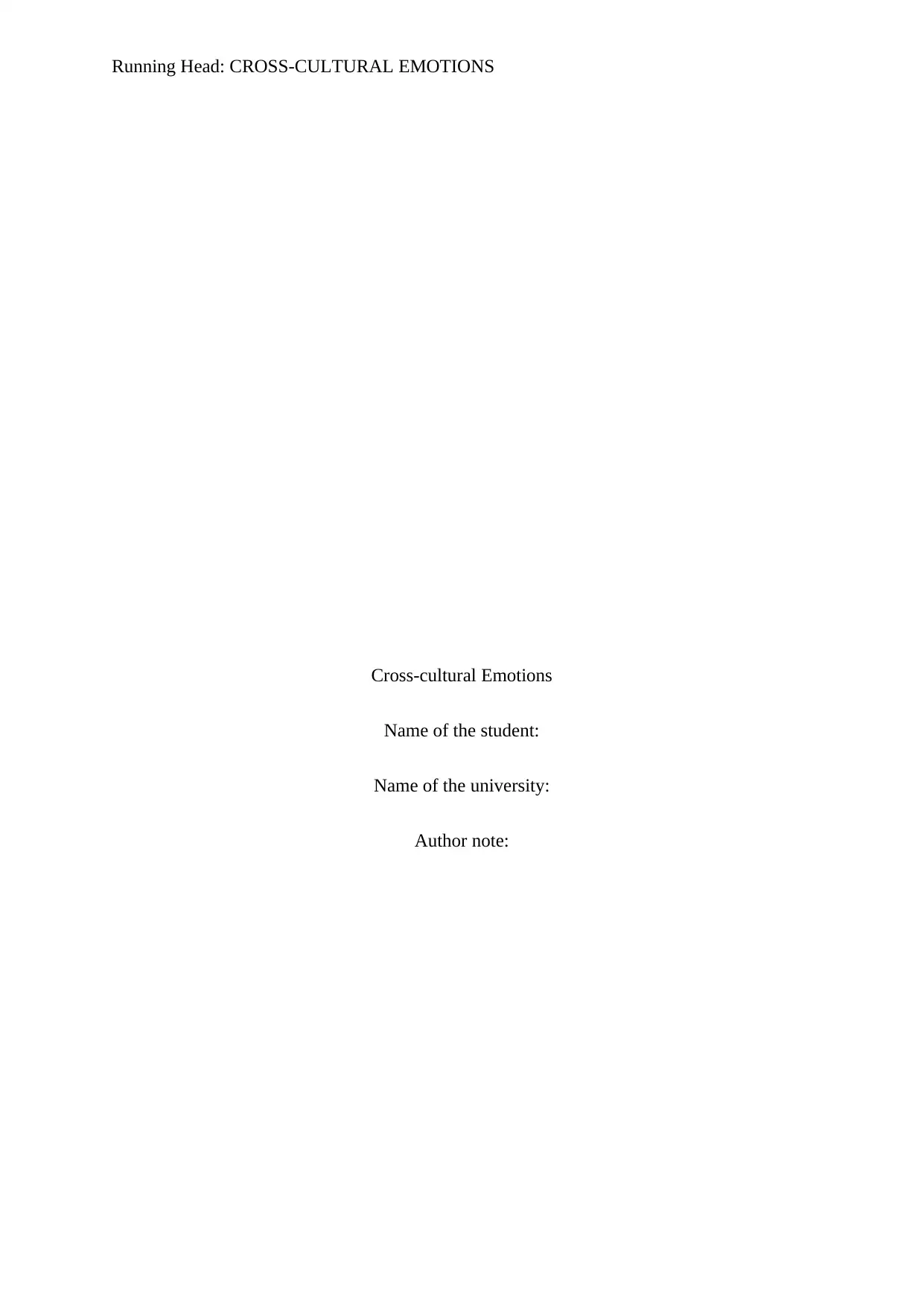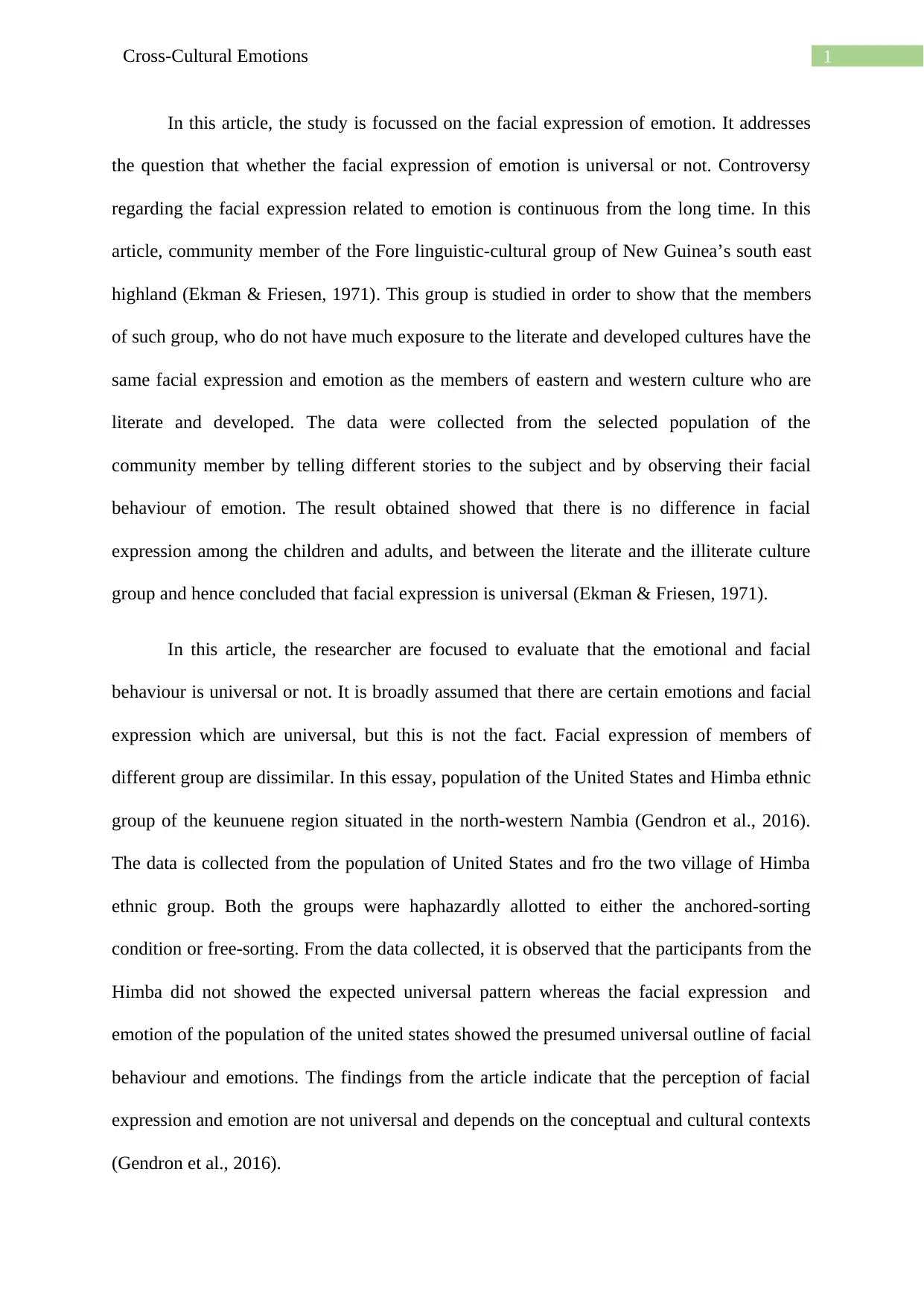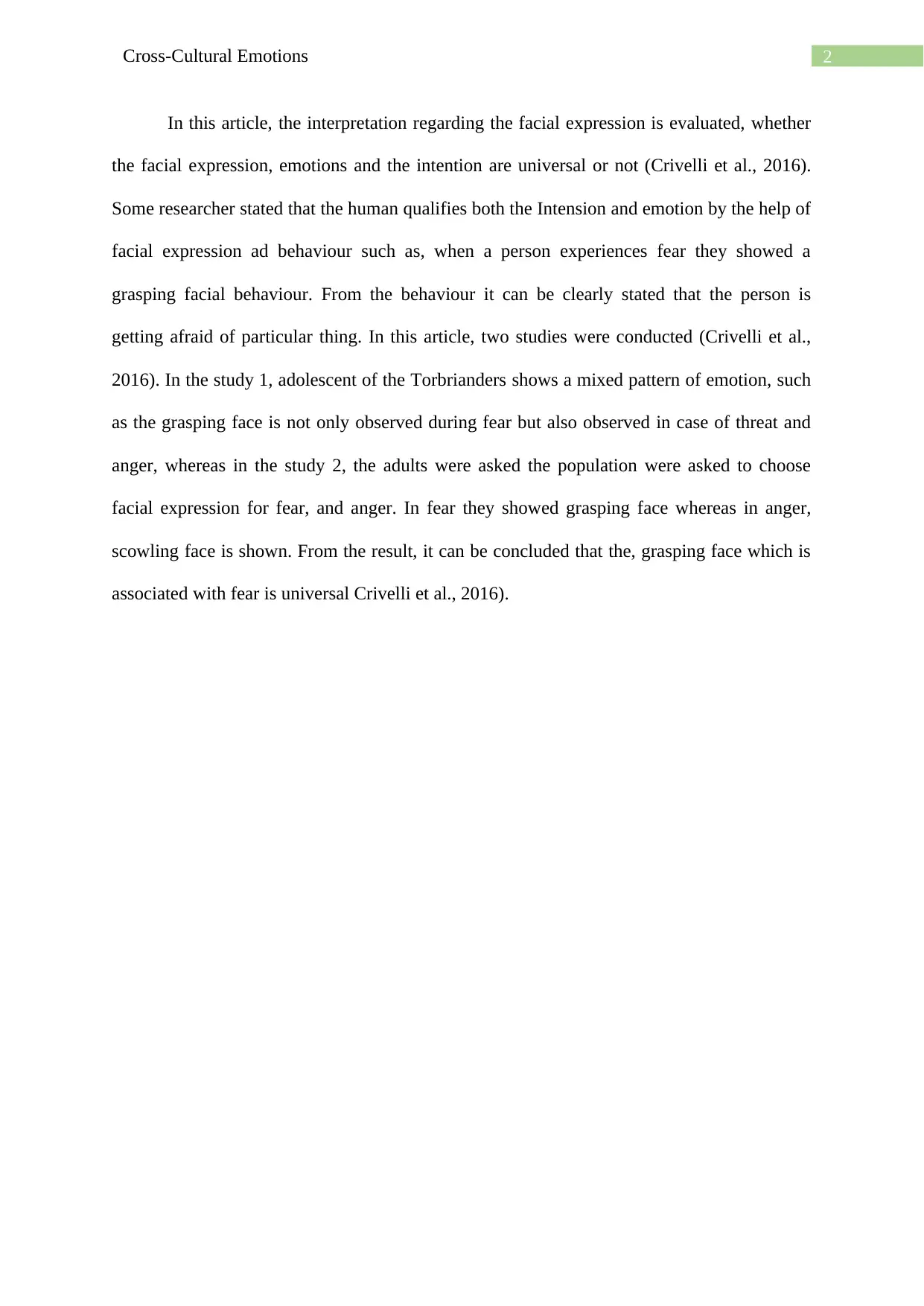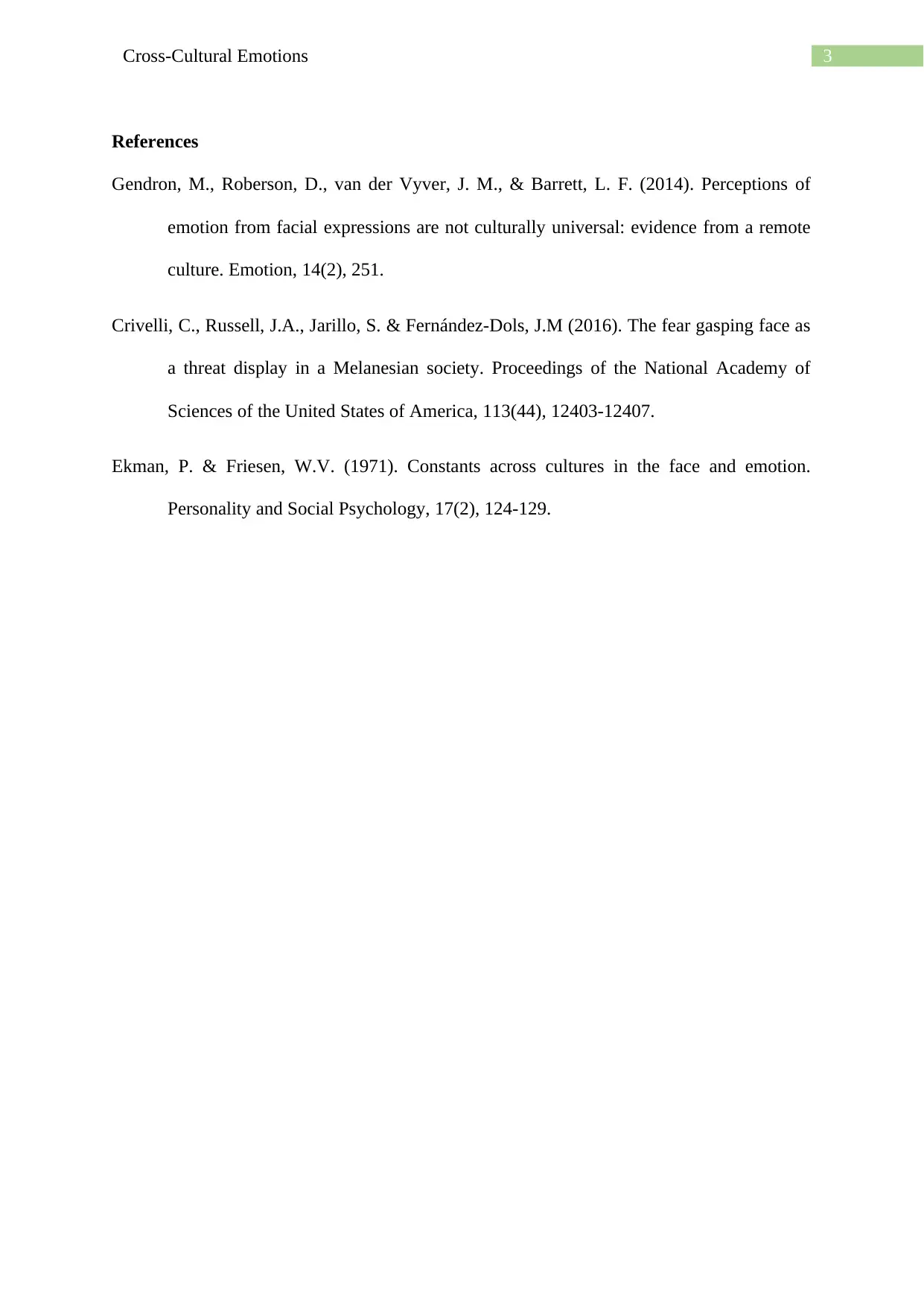Cross-Cultural Emotions: Literature Review of Facial Expressions
VerifiedAdded on 2023/01/16
|4
|760
|44
Report
AI Summary
This report analyzes the ongoing debate regarding the universality of facial expressions across different cultures. It begins by exploring Ekman and Friesen's study on the Fore linguistic-cultural group of New Guinea, which suggested universal facial expressions. However, the report then contrasts this with Gendron et al.'s research on the Himba ethnic group, which found that facial expression perception is not universal and depends on cultural contexts. The report also discusses Crivelli et al.'s findings on the Torbrianders' mixed patterns of emotion, indicating that grasping faces may be associated with fear, threat and anger, and that while grasping faces are associated with fear, the facial expressions differ across cultures. The report emphasizes that the interpretation of facial expressions is influenced by culture, conceptual frameworks, and social context. Ultimately, the report highlights the complexities of emotion recognition and the need for further research to understand the interplay between culture and facial expressions.
1 out of 4







![[object Object]](/_next/static/media/star-bottom.7253800d.svg)